Christmas Traditions in Barcelona and Catalonia
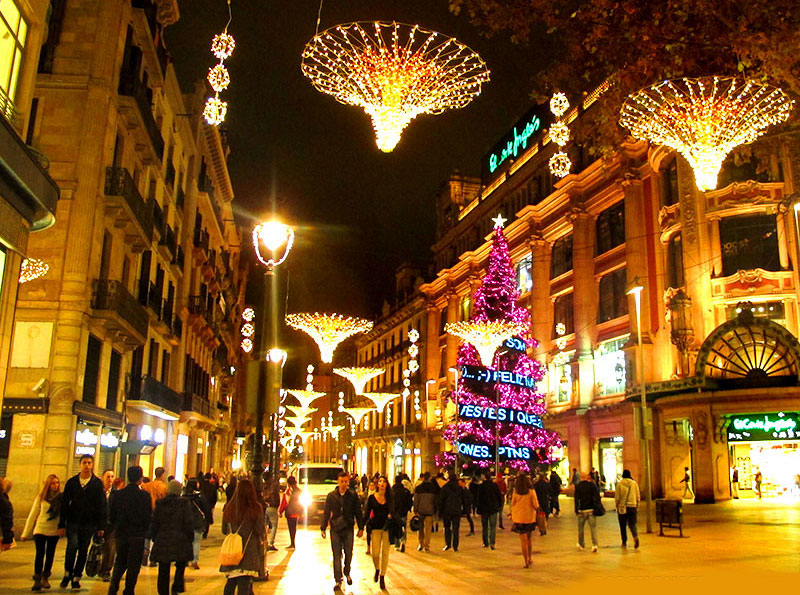
At first sight, Christmas-time in Barcelona looks pretty much the same as everywhere else. You’ll see plenty of Santas hanging off the balconies, shop windows glistening with all sorts of eye-catching decoration, overcrowded shopping malls with thousands of people desperately hunting for presents… But there are also some interesting details that make a Catalan Christmas really different. Read the 7 points below to learn what you should buy and do to feel the true spirit of Christmas in Barcelona:
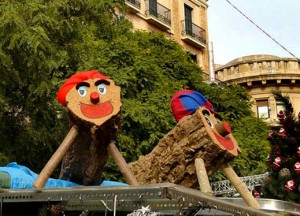 1. Tió de Nadal (The Cagatió Festivity)
1. Tió de Nadal (The Cagatió Festivity)
This is the most important figure in the Catalan Christmas. A sort of poo-poo log, that’s what this “yuletide log” is about (“caga tió” literally means “shit, log!” and refers to the chant kids address to it). If it doesn’t sound attractive to you, change your mind and get one for your home – this guy is the one responsible for delivering presents! You should put this smiling piece of wood by a fireplace at least a month before Christmas, cover him with a blanket so that he will not be cold, and then feed him every day (he especially likes orange and tangerine rinds). And on Christmas day, you beat him with a stick while singing a special song, and he will poop presents for everybody in the house! Nothing really big, but lots of candy, sweets and torrons (see Point 5). That’s what all Catalan children do, and it works perfectly for them. The tió keeps the children happy while they anticipate the Three Kings Day (see Point 7).
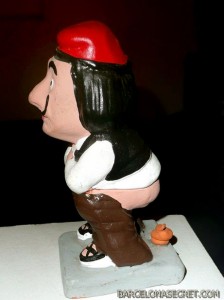 2. Caganer
2. Caganer
The caganer is another very surprising traditional figure in the Catalan Christmas. It’s a clay figurine of a person defecating, a very important part of a Catalan nativity scene. No-one is certain how the tradition arose or what it really means, but it symbolizes fertility (as in fertile soil), and by extension, material well-being and wealth for the coming year. Originally, the caganer came in the form of a Catalan farmer fertilizing his land, but today you can find a myriad variety of caganers in the guise of politicians, actors, pop singers, prominent sportspeople or other celebrities, or just representing some profession or craft. Since the caganer is usually hidden in a corner of the pessebre, it’s a native sport to stroll through the city and try to spot the caganer figure in the different nativities displayed in shop windows or in people’s homes.
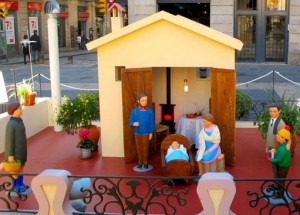 3. The Nativity Scene at Plaça Sant Jaume
3. The Nativity Scene at Plaça Sant Jaume
The biggest caganer of Barcelona can usually be spotted at Plaça Sant Jaume Square, where the main nativity scene (pessebre) of Barcelona, often life-size and occupying a sizeable chunk of the square, is displayed every year next to the Barcelona City Hall. A competition of projects by different artists is held by the City Council, and the winning nativity scene gets to decorate the square for over a month, attracting thousands of Barcelonans and visitors every day. You also should not miss the different diorama exhibits where you can see many examples of the traditional Catalan nativity scene done by artisans and associations (usually at the Diocesian Museum (Museu Diocesà) next to the cathedral and at the Church of Bethlehem (Esglèsia de Betlem) on the Rambles.
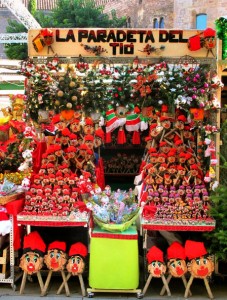 4. Christmas Markets
4. Christmas Markets
If you need to buy presents in Barcelona, you can find all sorts of things at the Christmas markets (fira de nadal or fira de reis) across the town, selling the tió “poop log” and caganers, along with other figures for nativity scenes, but also Christmas trees and Christmas flowers, mistletoe and eucalyptus, and a variety of objects by artisans, ranging from hand-painted scarves and hand-made paper and cards to miniature baskets, jewelry, wooden toys and knick-knacks. The main market is called Fira de Santa Llúcia and takes place in front of the Cathedral. Another good one can be found by the Sagrada Família church.
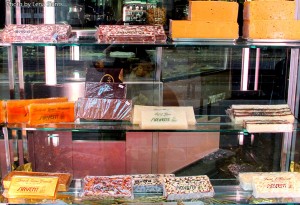 5. Torrons
5. Torrons
Christmas wouldn’t be the same without sweets. Here in Catalonia Christmas is the season for eating torrons – a typical desert in the form of a bar made of honey and almonds, with variants including egg or egg white and chocolate, and some can be toasted or caramelized. The most typical torrons are the “torró d’Alacant”, made of honey, toasted almonds and egg whites and having a “rock hard” consistency (fun to eat because you have to smash it to bits or use a machete before you can really dig in), and the “torró de Xixona”, made of honey and chopped almonds and very soft, together with the “turró de crema cremada” (made of almonds, sugar, eggs and lemon rind and caramelized on top). Torrons are on sale in every supermarket during the Christmas season, but the best place to buy them are the specialized shops, where you can find high-quality, traditional or experimental types – you won’t regret paying more – the difference is huge.
6. Missa del Gall
Many Barcelonans or Catalans in general, even if they are not practicing Catholics or are atheist, go the Midnight Mass or Missa del Gall on the night before Christmas to get in the Christmas spirit. If you are alone here and don’t know what to do on that day, it’s a wonderful opportunity to gather together with many people in the cathedral or Santa Maria del Mar, wonder at the gothic vaulting and the architecture in general while listening to music and the mesmerizing voice of the priest, and be enveloped in the warmth and spirit of the evening.
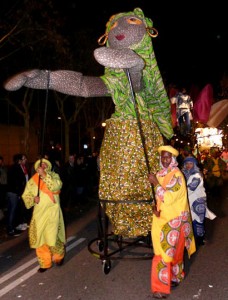 7. Reis (Three Kings Day or The Epiphany)
7. Reis (Three Kings Day or The Epiphany)
Reis (The Epiphany) is the real Catalan Christmas, in the sense that it is the Three Kings who bring children their gifts (the important ones, not just the candy like the tió!). The Kings or Magi (Reis) visit every town and every city of Catalonia on January 5 (gifts appear in homes on the morning of the 6th), in huge evening processions, with pages and floats, often tractors instead of steeds, and music, pomp and circumstance. They are greeted by the mayors themselves on the Town Hall balcony or similar public space. The entire community comes out to greet the Kings, especially the kids, of course. A gorgeous festivity, not to be missed. In Barcelona, they arrive via the sea. Read more: Three Kings Parade (Cavalcada de Reis)
Enjoy the Christmas time in Barcelona and remember – the best way to learn everything about Catalan Christmas traditions is to book one of our private tours of Barcelona!
©Barcelona Secrets 2015